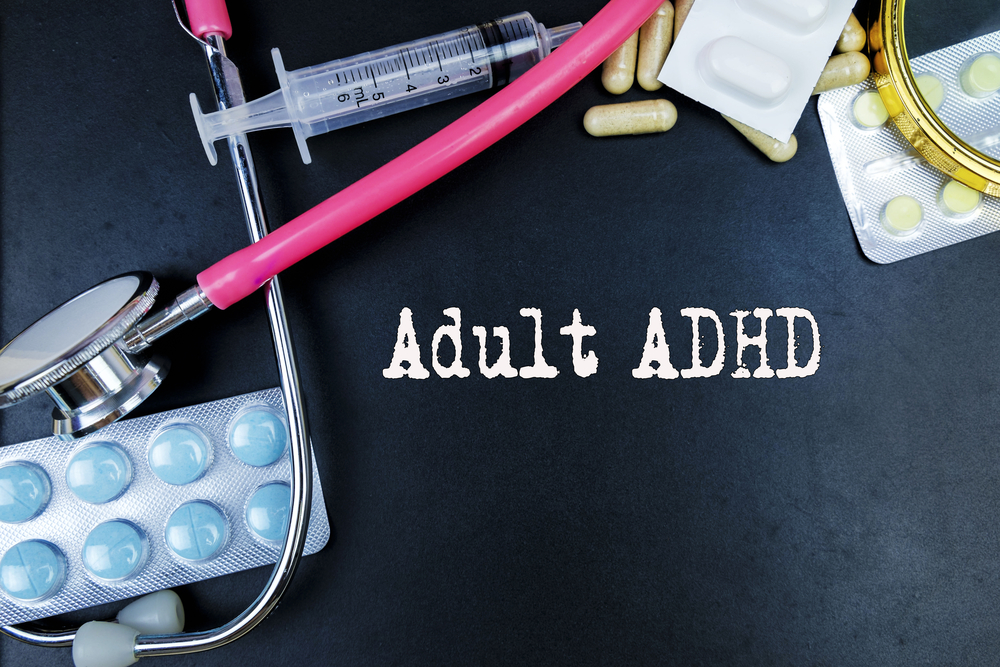The prevalence of attention-deficit/hyperactivity disorder, or ADHD, has continued to rise among adults in the U.S.
Adult cases of ADHD in the U.S. vary, often due to difficulties in gathering data related to the reporting of symptoms by patients. However, research supports that diagnoses among adults are growing, says Dr. Je Ajayi, a Board-Certified Psychiatrist who specializes in the treatment of ADHD.
One 2019 study estimated that the prevalence of adult ADHD has doubled compared to a decade prior.
What is causing the rise in diagnosis? According to Dr. Ajayi, this question doesn’t have a simple answer — but leading experts believe improvements in the training of medical professionals in the recognition of the symptoms of ADHD is primarily responsible for the increase in ADHD diagnoses.
“Additionally, there has been a dramatic decrease in the stigma associated with the diagnosis leading more adults to seek evaluation and treatment,” he says.
Although more adults are being diagnosed with the disorder, it is not common to develop ADHD later in life. In fact, many experts believe it to be late recognition of the condition, as opposed to the onset of it, Ajayi says.

“For instance, many adults will express that they had challenges in childhood but were never evaluated for a number of reasons, including but not limited to cultural and financial challenges,” he says. While it may have been present prior, these people are considered to have ADHD of the late-onset subtype.
Social media may play a role in more adults being diagnosed with ADHD, Ajayi says.
Discussions of Adult ADHD are on the rise since the emergence of ADHDTok, a major subculture on the social media app Tik Tok, where content creators are presenting their symptoms of the disorder. This has accelerated the number of adults questioning if they could potentially have ADHD.
Oftentimes, mental health diagnoses follow these types of trends in traditional and social media, Ajayi says.
“Heightened awareness of certain diagnoses and symptoms can lead to increased requests for evaluations and increased diagnoses as a result,” he says. “This is a good thing as so many adults were not being treated in the past and suffering decreased quality of life as a result.”
Whether overuse of digital technology is having an impact on the climb in ADHD adults is a controversial topic as there is not a lot of research available, especially in the adult population, Ajayi says.
One study shows a rise in the frequency of reported ADHD symptoms with increased digital media use in adolescents. While another suggests that symptoms of psychiatric disorders — such as ADHD — in adults were correlated with an individual’s addictive social networking and video gaming. Results showed that this disorder explained more of the addictive use of social media in the study’s subjects. The report speculated that features — such as constant notifications on mobile phones, which are typically used for social networking — make individuals who are easily distracted or impulsive more susceptible to excessive or compulsive use of social media.
Meanwhile, gender could play a role in ADHD in women being underdiagnosed at a young age, leading to more diagnoses of adult females.
Studies show that males are generally more likely to be diagnosed with ADHD than females — with a male to female ratio of approximately 4:1, Ajayi says.
“This is controversial as research on gender differences suggests that girls may be consistently under-identified and underdiagnosed mostly explained by differences in the expression of the disorder among boys and girls,” he says.
Rebecca Wineland, a clinical therapist ADHD coach who specializes in working with women who have been recently diagnosed with the disorder, says women are often underdiagnosed in childhood because girls often present as being distracted and quiet due to their ADHD, whereas boys are often hyperactive and distract other children, which leads to a discrepancy in diagnosis.
Girls also more commonly “conform to social pressure to do well in school — and still today — many people can’t get a diagnosis if they are getting good grades,” she says.
Treatment of ADHD
With ADHD cases climbing in adults, as is the demand for non-drug alternatives to treat the disorder.
Some of the symptoms associated with ADHD can be improved with neurofeedback devices. Companies such as Narbis have created neurofeedback devices that utilize biofeedback as a non-invasive, non-drug way to change the way your brain functions and build long-lasting attention and focus skills. Narbis smart glasses use technology to measure brain patterns, and sensors to track how relaxed, distracted, and focused you are. When distracted, the glasses change tint and when you refocus and are concentrating, they instantly clear.
If you think you might have ADHD, it’s important to be diagnosed by a healthcare professional. Ajayi recommends any individual having trouble concentrating, or displaying other symptoms of ADHD, consider going to a doctor or therapist for an initial evaluation.
“There are many causes of poor concentration and you certainly do not want to miss more severe disorders like depression or neurological conditions,” he says.
Article originally published on NewsBreak







